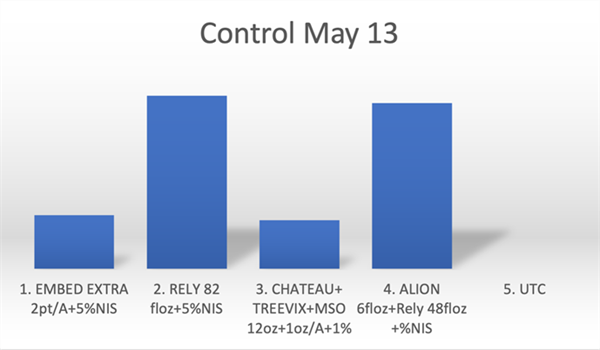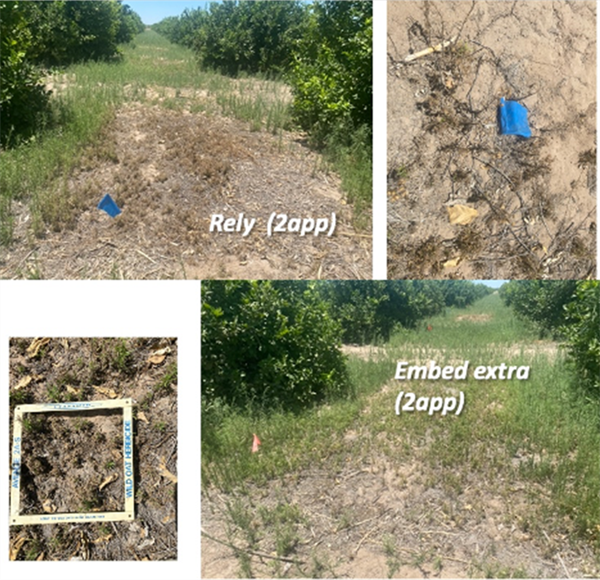Overreliance in glyphosate could increase the risk of reduced efficacy of this herbicide. Some the weeds difficult to control with glyphosate in our area are: Hairy fleabane (Coniza bonariensis), Horseweed (Coniza canadiensis), White sweet clover (Melilotus albus). Pig weed (Amaranthus palmeri), and Cheeseweed (Malva parviflora). We are conducting experiments in the Yuma area to identify effective herbicide control options for Hairy fleabane. Some research done in Australia has shown that Fleabane cannot be controlled with a single herbicide treatment even with knockdown herbicides such as paraquat + diquat, and researchers suggest the need of combinations of different modes of action to achieve control effectively1. In one fleabane evaluation started May 6, 2022, we included the following treatments: 1. Embed Extra 2pt/A+5%NIS 2. Rely 82 floz+5%NIS 3. Chateau+ Treevix+MSO (12oz+1oz/A+1%)


We noticed treatments including Glufosinate (Rely) showed best burndown activity, but regrowth was observed in two weeks (13-14 plants per ft2). So, a second application was performed on three weeks after first on the Rely plots.
The grower and PCA informs us that Sulfenacil (Sharpen) has worked effectively for them with sequential applications. Additionally, we are evaluating Suppress and Clopyralid in the same location.
You are always welcomed to send your comments, suggestions to the IPM Team. Let us know what you are doing and your findings. We know there is a researcher in every grower and PCA and your input is greatly appreciated.

- Hanwen Wu, Steve Walker and Geoff Robinson (2008). Chemical control of flaxleaf fleaeabane (Conyza bonariensis (L.) Cronquist) in winter fallows. Plant Protection Quarterly Vol.23(4) 2008
- Travlos, I., & Chachalis, D. (2010). Glyphosate-Resistant Hairy Fleabane (Conyza bonariensis) Is Reported in Greece. Weed Technology, 24(4), 569-573. doi:10.1614/WT-D-09-00080.1





